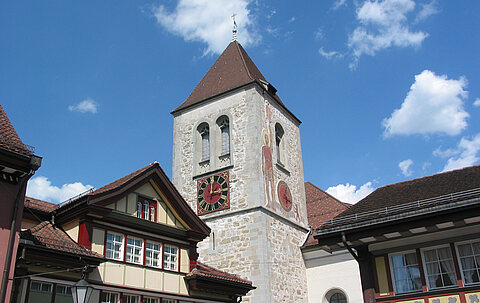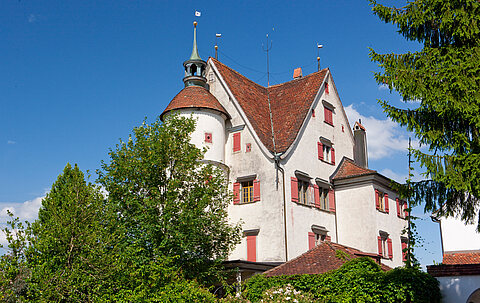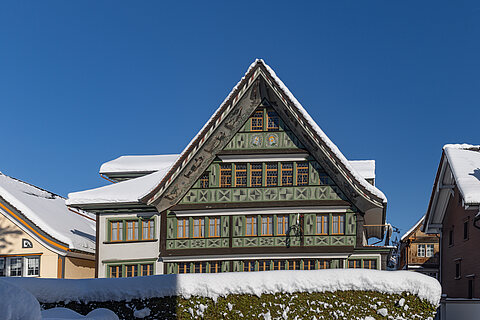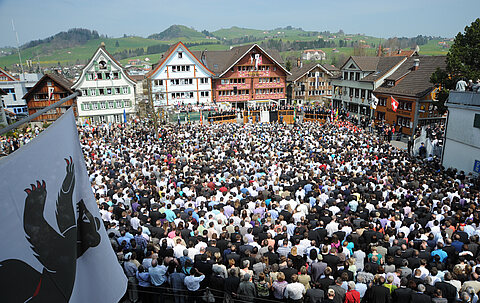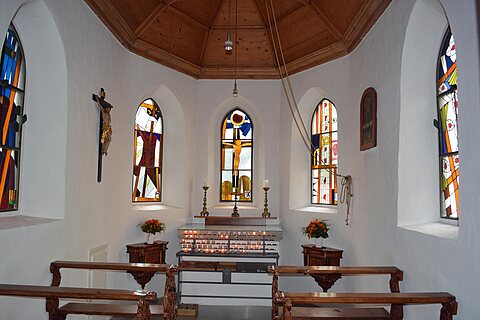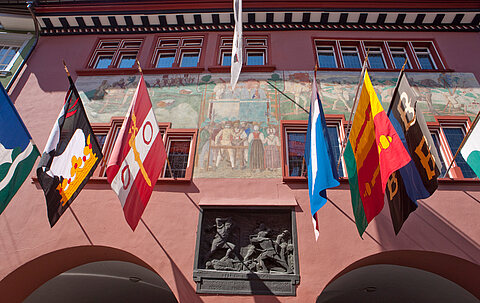Tour of the village
Catholic church
With its variety of styles the imposing catholic church reveals an interesting architectural history. The first church to be erected on this site was mentioned in 1071 when the parish was established. It was dedicated to St. Maurice, and is known to locals as «de Moritz». Not far from the catholic church, just across the beautifully laid-out cemetery, is the Evangelical (protestant) Church.
The castle
The enclosed building known as the «Schloss» (castle) to the east of the Postplatz has always occupied a unique position in Appenzell’s village architecture. It has been privately owned since 1780 by the Sutter family, who still reside there, and is not open to the public. Right next to the castle is the Convent of Mary the Angel, which was built by the Capuchin religious order in the early 1680s.
Salesis House
The Salesis House on the Postplatz, the only free-standing stone building apart from the castle, is a tribute to the affluence of the village. The solid, three-storey square building of rendered quarried stone with a wide pitched roof dates back to the flourishing economy of the late 16th century.
Concordia House
Another outstanding building is the Concordia House on Engelgasse, a patrician house with a steep gabled roof dating from the 17th century. A richly decorated series of panels covers the entire southern façade and the paintings under the eaves represent the eight ages of man. This lively work of art in muted colours was created by August Schmid (1930).
Löwen pharmacy
The Löwen pharmacy with beautiful paintings on its decorated facade is an architectural gem. Johannes Hugentobler painted medicinal herbs on the round-arched panels covering the shutters to illustrate to the purpose of the building. The main street, or Hauptgasse, with its quaint, colourful houses is always a unique attraction for our visitors.

